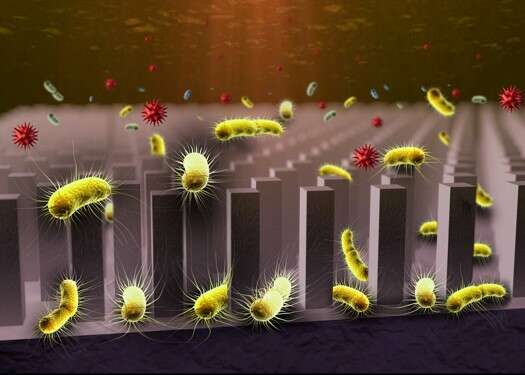
Unraveling Colonization Behavior and Antibiotic Susceptibility of Bacterial Networks on Lamellar Silicon Arrays Using Intrinsic Phase-Shift Spectroscopy
2Department of Urology, Bnai Zion Medical Center, Haifa, Israel
3The Russell Berrie Nanotechnology Institute, Technion-Israel Institute of Technology, Haifa, Israel
Development of clinical techniques for rapid bacterial antimicrobial susceptibility testing (AST) and determination of the minimum inhibitory concentration (MIC) are crucial in battling the widespread misuse of antibiotics and the emergence of resistant pathogens. We have employed photonic 2D silicon microarrays as a method of rapid phenotypic AST. We harness the intrinsic ability of the micro-architectures to relay optical phase-shift reflectometric interference spectroscopic measurements (termed PRISM) and incorporate it into a platform for culture-free, label-free tracking of bacterial accumulation, proliferation, and death. This assay employs microfluidic channels interfaced with PRISM chips and is carried out in a two-stage process, namely bacteria seeding and antibiotic incubation. Bacteria proliferation within the microtopologies results in an increase in refractive index of the medium, yielding in an increase in optical path difference, while cell death or bacteriostatic activity results in decreasing or unchanged values. The optical responses of bacteria to various concentrations of relevant antibiotics have been tracked in real time, allowing for minimum inhibitory concentrations to be determined in 2-3 hours and compared to standard broth microdilution techniques and clinical automated systems (assay time of 8 hours).
We further extended this work to analyze antibiotic susceptibilities of clinical isolates and direct urine samples derived from patients at neighboring hospitals in newly designed, disposable microfluidic devices. This has opened the door to the observation of unique bacterial behaviors, as we can evaluate bacterial adhesion, growth, and antibiotic resistance on different micro-architectures, different surface chemistries, and even different strains. Motility, charge, and biofilm abilities have been explored for their effect on bacterial adhesion to the microstructures as we further develop our method of rapid, label-free AST for full clinical application.

Powered by Eventact EMS